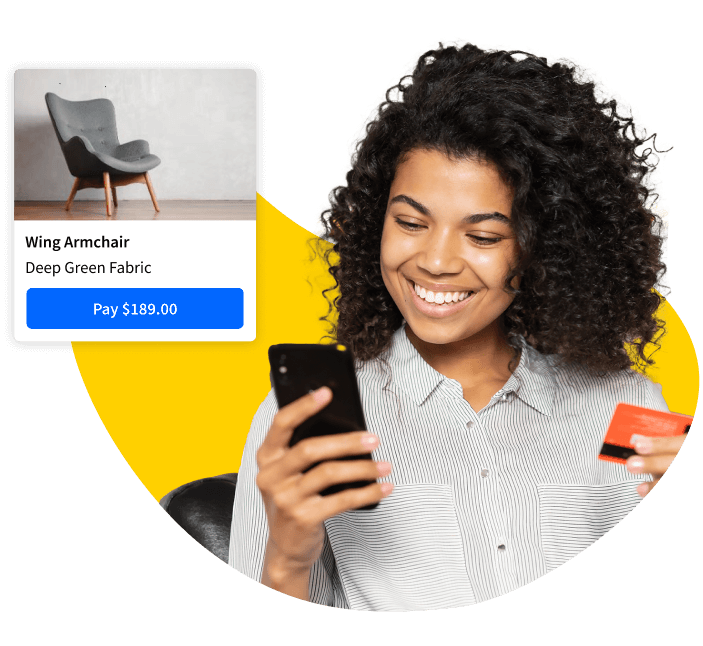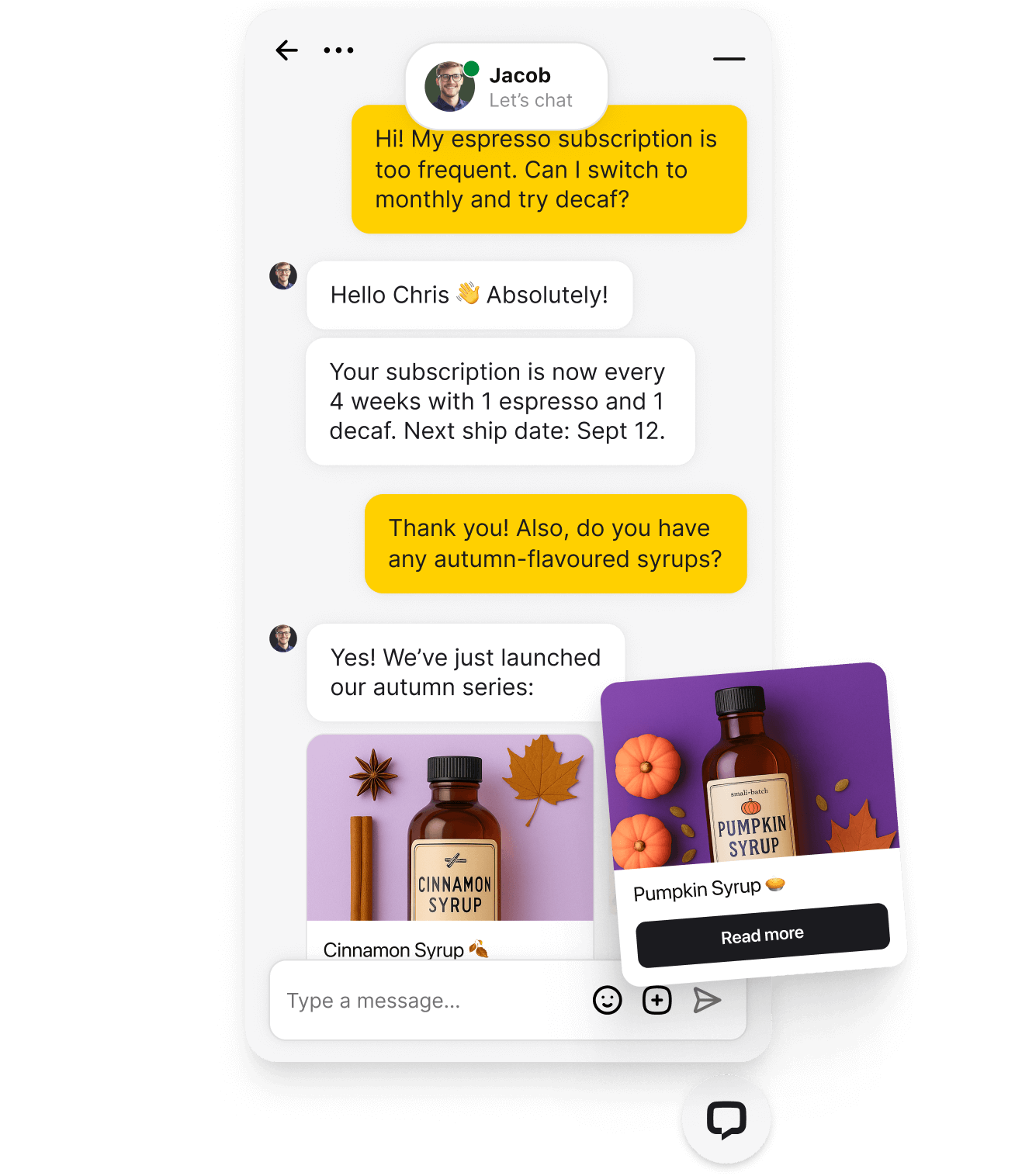
TL;DR: AI-powered website widgets aren’t just add-ons — they’re your website’s front desk. From chat to recommendations, the right mix turns visitors into customers and tickets into instant answers.
***
A decade ago, a website was little more than a brochure. A few pages, a contact form, maybe a pop-up if you were ambitious. Today, that kind of static experience feels like walking into a store with no staff — no one to greet you, no answers to simple questions, no guidance on what to buy.
That gap is exactly where website widgets have stepped in. And now, with AI at their core, they’re no longer just decorative add-ons. They act, they answer, they guide. The right widget can check an order, recommend a product, or resolve a support issue before a human ever gets involved.
Why AI widgets are replacing old plug-ins
Customer expectations have quietly changed. People want instant answers at midnight, personalized offers when they browse, and reassurance before they click “buy.” Traditional widgets — static forms, one-size-fits-all pop-ups — aren’t enough to keep up.
AI-powered widgets are different. They tap into your knowledge base, your product catalog, even your CRM. Instead of waiting for a human to reply, they give help in the moment. For businesses, that means fewer lost leads, fewer support tickets, and a smoother path from interest to purchase.
In a crowded online world, these small boxes on your site often decide whether someone stays or bounces.
What are AI website widgets?
AI website widgets are interactive tools embedded on your site — like chatbots, product recommenders, or review carousels — that use artificial intelligence to respond in real time. Instead of static forms or pop-ups, these widgets act instantly: answering questions, guiding purchases, or showcasing social proof. The result is smoother support, higher engagement, and more conversions without adding friction to the customer journey.
The best AI-powered website widget examples
Not all widgets are created equal. Some are distractions — clunky pop-ups that drive people away.
The best ones feel like part of the conversation, stepping in at the right moment with the right help. AI is what makes that possible. From support to sales, these widgets adapt in real time, guiding customers instead of interrupting them.
Let’s look at the types that are making the biggest impact today.
AI chat and support widget
Think of an AI support widget as the front desk of a hotel that never closes. Guests don’t care if it’s 3 PM or 3 AM — they expect someone to greet them, answer questions, and solve problems on the spot. The Text App’s AI-first widget does exactly that for your website. It resolves common issues immediately and calls in a human when needed. The payoff: seamless service and fewer headaches for your team.
Smart product recommendation widget
Browsing without guidance often leads to abandoned carts. AI recommendation widgets change that. They learn from browsing history, past purchases, or even what’s in the cart right now. The effect? A customer looking at hiking boots also sees the perfect waterproof jacket. These subtle nudges increase average order value while making shopping feel personal, not pushy.
Customer review and social proof widget
Trust is built in moments. When visitors see real-time ratings or recent testimonials pop up, hesitation melts away. AI-driven review widgets can surface the most relevant feedback — like reviews from people in the same city or about the exact product being viewed. That kind of context turns social proof into a quiet but powerful sales driver.
Lead capture with AI qualification
A form that just collects emails is passive. An AI-powered lead widget is proactive. It can ask tailored questions — “Are you looking for enterprise or starter plans?” — and route qualified leads to the right sales rep automatically. This means fewer dead-end sign-ups and more conversations that actually move the needle.
Knowledge base widget
Customers often want to self-serve, but searching through docs can feel like a maze. A knowledge base widget with AI search changes that. It surfaces answers right inside the page — no tab-hopping required. Imagine a software user asking, “How do I reset my password?” and getting the exact step-by-step guide instantly. That’s time saved for both the customer and your team.
Choosing the right AI-powered website widget
Adding widgets without a plan is like filling a toolbox with random gadgets — you’ll end up with clutter, not results. The smarter move is to match each widget to a clear business goal. Here’s a quick checklist to guide your choices:
-
Conversions or trust? If your biggest hurdle is abandoned carts, start with product recommendations or review widgets. If support costs are ballooning, chat and knowledge base widgets should come first.
-
Where do they fit in the funnel? A lead-capture widget at the top. Social proof in the middle. Support widgets at the bottom when buyers need reassurance.
-
AI autonomy vs. human fallback. Decide which tasks can be fully automated (password resets, FAQs) and which require smooth handoff to a human (VIP issues, sensitive topics).
-
Integration check. A widget is only as good as the systems it plugs into. Make sure it connects with your CRM, ecommerce stack, or helpdesk so data flows, not fragments.
The right mix isn’t about how many widgets you add, but how seamlessly they work together.
Proof that AI widgets pay off
The easiest way to see the value of AI widgets is in the before-and-after.
Before: customers waiting hours for replies, carts abandoned because no one answered a simple question, support teams buried in repetitive tickets.
After:
-
Faster support response. An AI chat widget fields common requests instantly, leaving your human team to focus on complex issues.
-
Higher conversion rates. Product recommendations and reviews nudge visitors toward purchase instead of hesitation.
-
Trust built in real time. Seeing authentic feedback or getting an immediate answer reassures customers they’re in good hands.
-
Happier teams. Instead of chasing “where’s my order” tickets, agents handle meaningful conversations.
Companies using the Text App’s widget report fewer repetitive chats and higher customer satisfaction scores. The lesson is simple: when the little boxes on your site start doing real work, the impact is anything but small.
The next step for your website
AI widgets aren’t window dressing anymore — they’re the front line of your customer experience. They welcome visitors, answer questions, and build trust before anyone on your team even opens their inbox.
The next step isn’t about adding more widgets for the sake of it. It’s about choosing the right ones, the ones that align with your goals and fit naturally into your site.
Start small, measure the impact, and expand. With tools like the Text App, you’ll see how quickly a single widget can change the way customers experience your business.
Ready to see what AI widgets can do on your own site? Start with one that matters most — support, trust, or conversion — and watch how quickly it pays off.
FAQ
What is a website widget example?
A website widget is a small, interactive feature you embed on your site — like a live chat box, product recommender, or review carousel — that improves the customer’s experience without them leaving the page.
How do AI widgets differ from traditional widgets?
Traditional widgets display static info or collect inputs. AI widgets act in real time. They pull from your data to answer questions, suggest products, or qualify leads, making them more dynamic and useful.
Do widgets slow down websites?
Not if they’re well-built. Modern AI widgets are lightweight and optimized to load quickly. The key is choosing tools that integrate cleanly with your site, instead of piling on heavy scripts.
Which widget should every business start with?
Most businesses begin with an AI chat widget. It solves a wide range of customer problems instantly, reduces repetitive tickets, and sets the tone for responsive support.



